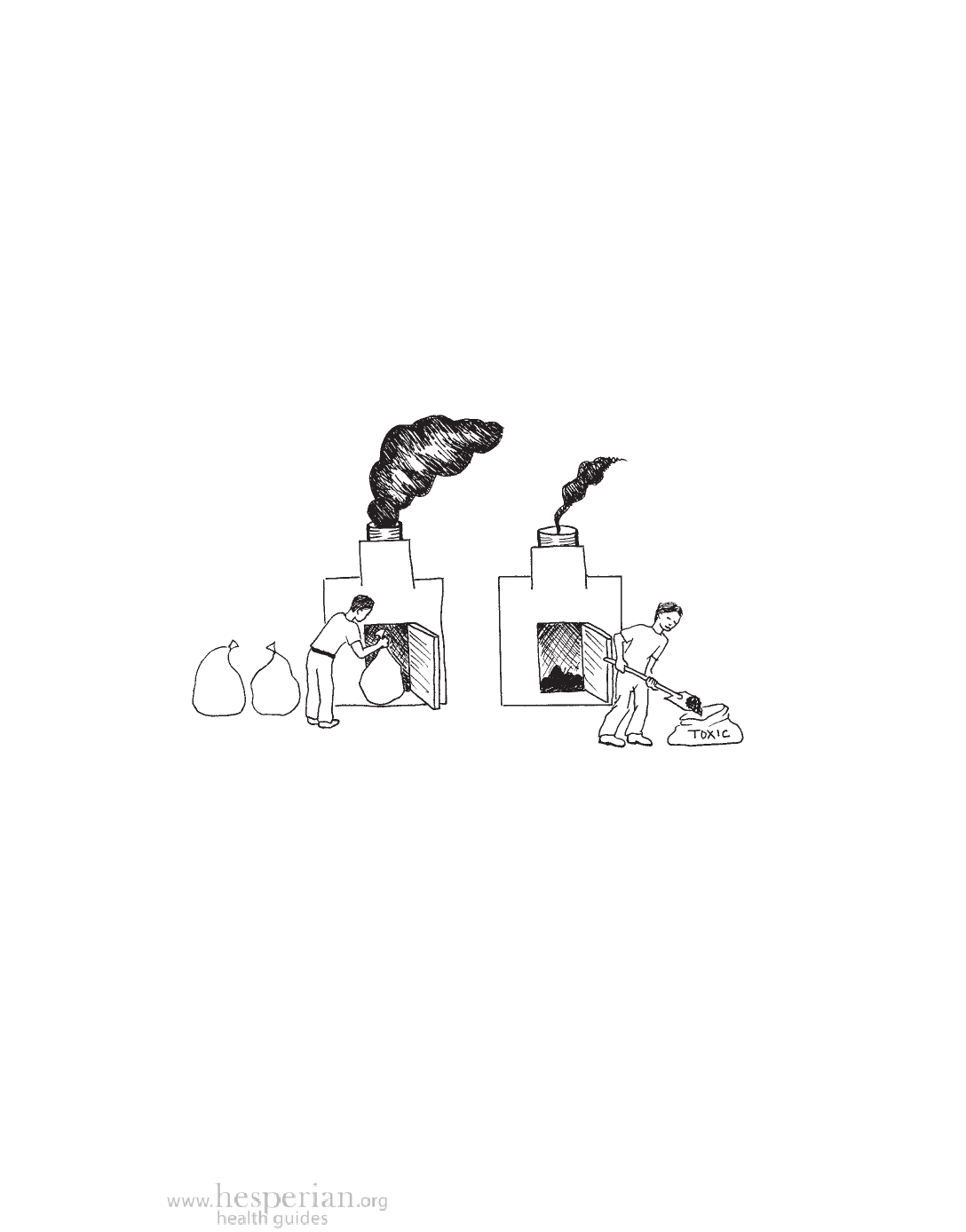
Th e Pr o b l e m o f B u r n i n g Wa s t e 423
The Problem of Burning Waste
To destroy health care waste and the germs it carries, many clinics and
hospitals burn it in an incinerator (an enclosed, high-heat fire). Burning health
care waste seems like an easy solution because different kinds of waste can be
collected and simply thrown into the incinerator. But burning waste this way
creates more health problems than it solves.
Burning waste, either in an open fire or an incinerator, releases toxic
chemicals into the air as smoke, and into the soil and groundwater as ashes.
Wastes containing mercury, lead, and other heavy metals release these
poisons into the environment when they are burned.
For every
3 bags of
waste burned,
1 bag of toxic ash is
produced, and other
toxic chemicals go into
the air, soil, and water.
Plastics used to make IV and blood bags, tubes, and some syringes produce
highly toxic chemicals called dioxins and furans when they are burned. These
chemicals have no color or smell and can cause cancer, make both women
and men infertile (unable to make a baby), and lead to other serious health
problems (see Chapter 16 and Chapter 20).
Sometimes incinerators do not burn hot enough or long enough to burn
waste completely. Some incinerators are built to handle particular wastes, such
as immunization wastes, but end up being used to burn medicines, pesticides,
and other toxic materials.
Often, the first steps in safely handling health care waste are to separate
materials that can be recycled or reused, then to disinfect waste that carries
harmful germs. By using safer alternatives to incineration, the health
worker’s oath to “do no harm” can be applied even to the difficult task of
getting rid of waste.
A Community Guide to Environmental Health 2012